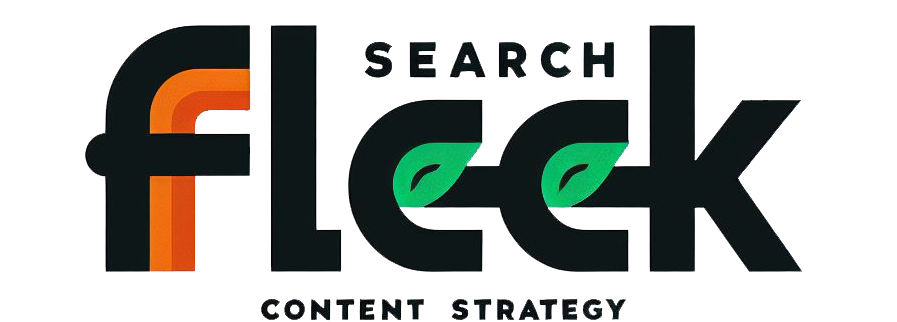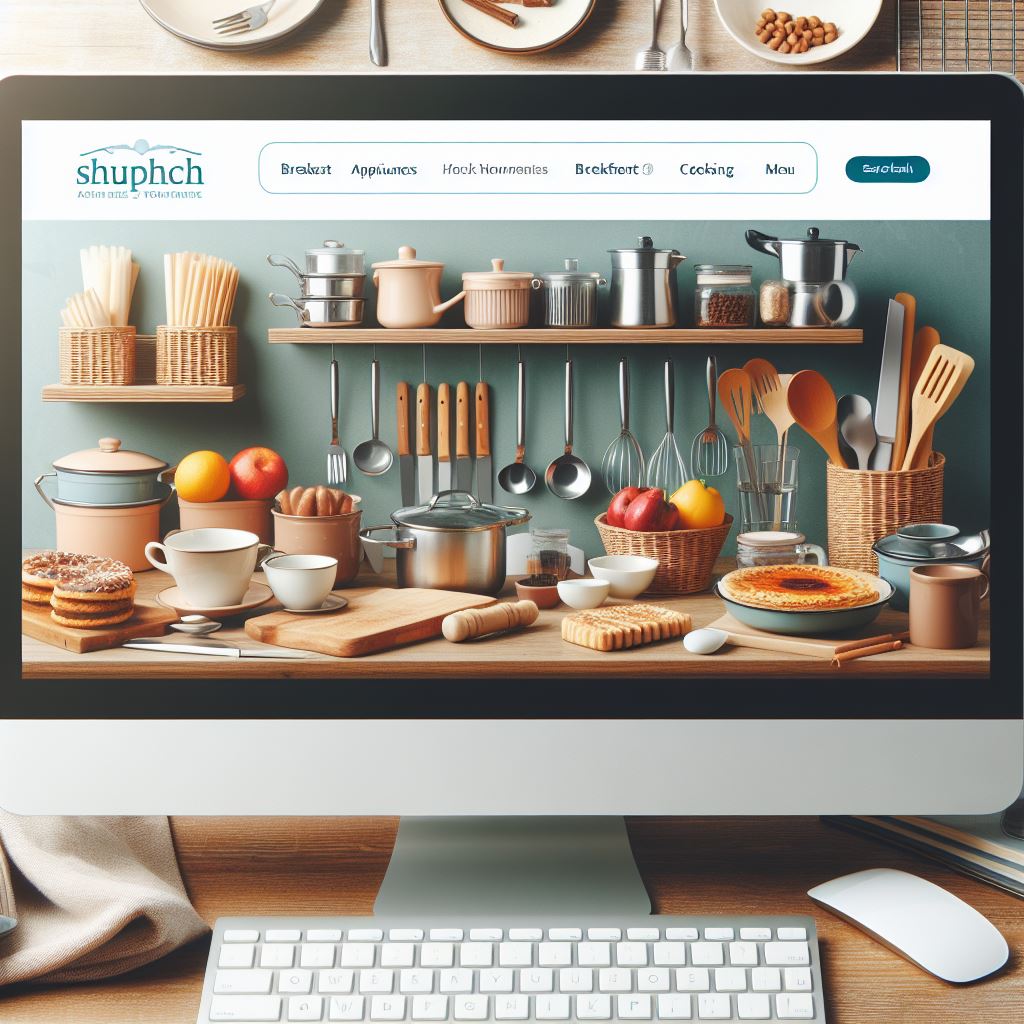In today’s digital world, user experience (UX) design reigns supreme. It’s the magic behind user-friendly interfaces, intuitive interactions, and ultimately, happy and satisfied users. Whether you’re a seasoned UX designer or just starting your journey, keeping your blog content fresh and engaging is crucial.
This blog post, brought to you by Search Fleek, ignites your creativity with 51 captivating UX design blog topic ideas to inspire and inform your audience:
51 UX Design Blog Post Ideas
Understanding UX Design Fundamentals
- The Power of UX Design: Why It Matters for Every Business: Explain the importance of UX design in creating successful digital products and enhancing user satisfaction.
- The UX Design Process: A Step-by-Step Guide: Demystify the UX design process, outlining key stages from user research to prototyping and testing.
- User Research Fundamentals for UX Designers: Discuss the importance of user research in understanding user needs and inform design decisions.
- User Personas: Building Empathy Through User Profiles: Explain the value of user personas in UX design and guide readers on creating effective user profiles.
- Information Architecture: Organizing Content for Optimal Usability: Introduce information architecture (IA) principles and its role in organizing content for intuitive user navigation.
- Wireframing Fundamentals: Building the Skeleton of Your Design: Explain the purpose of wireframing in UX design and provide tips for creating effective wireframes.
- Prototyping in UX Design: Bringing Ideas to Life: Discuss the importance of prototyping in UX design and explore different prototyping tools and techniques.
- Usability Testing: Uncovering User Pain Points: Explain the value of usability testing in identifying user challenges and improving design solutions.
- Designing for Accessibility: Creating Inclusive Experiences for All: Highlight the importance of accessibility in UX design and guide readers on creating inclusive experiences for users with disabilities.
- UX Design Metrics: Measuring the Success of Your Designs: Discuss key UX design metrics and how they can be used to evaluate design effectiveness.
UX Design Trends and Innovations
- Voice User Interface (VUI) Design: The Rise of Conversational Interfaces: Explore the growing trend of VUI design and how it’s shaping user interactions with technology.
- Microinteractions: The Power of Small Design Details: Highlight the impact of microinteractions in UX design and provide tips for creating engaging microinteractions.
- The Future of UX Design: Emerging Trends to Watch: Discuss upcoming trends in UX design, such as artificial intelligence (AI) integration, personalization, and augmented reality (AR) experiences.
- Designing for Wearables: Optimizing User Experiences on Small Screens: Explore the unique challenges and considerations for designing user experiences on wearable devices.
- UX Design for Dark Mode: Creating Optimal User Experiences: Discuss the rise of dark mode interfaces and how to design effective dark mode experiences for users.
- UX Design for Social Impact: Using Design to Tackle Social Challenges: Explore the role of UX design in addressing social issues and creating positive change.
- The Ethics of UX Design: Avoiding Dark Design Patterns: Discuss the ethical considerations in UX design and highlight deceptive or manipulative design practices to avoid.
- UX Design for Multigenerational Users: Emphasize the importance of designing for users of all ages and abilities.
- UX Design for the Metaverse: Building Immersive User Experiences: Explore the design considerations for creating user experiences within the metaverse.
- UX Writing: Crafting Clear and Compelling User-Centered Text: Highlight the importance of UX writing in creating clear and concise communication within applications and interfaces.
UX Design for Different Platforms and Applications
- Designing for Mobile-First: Optimizing User Experiences on Smartphones: Discuss the growing importance of mobile-first design and provide tips for creating engaging mobile experiences.
- UX Design for E-commerce: Streamlining the User Journey for Online Shopping: Explore best practices for designing user-friendly e-commerce platforms that encourage conversions.
- UX Design for SaaS Applications: Creating Intuitive Interfaces for Software as a Service: Discuss design considerations for SaaS applications, ensuring smooth onboarding and user retention.
- UX Design for Dashboards and Data Visualization: Explain the importance of clear and concise data visualization in UX design and provide tips for creating effective dashboards.
- Designing for Complex Systems: Creating User-Friendly Experiences for Enterprise Applications: Explore strategies for designing intuitive user interfaces for complex enterprise software applications.
- UX Design for Educational Technology (EdTech): Engaging Students Through Interactive Learning Experiences: Discuss how UX design principles can be applied to create engaging and effective educational technology tools.
- UX Design for Gaming: Building Immersive and Engaging Gameplay Experiences: Explore the role of UX design in the gaming industry and how to create captivating gameplay experiences.
- UX Design for Virtual Reality (VR): Crafting User Experiences in a New Dimension: Discuss the design considerations for creating user experiences within virtual reality environments.
- Accessibility Testing Tools and Resources for UX Designers: Provide a list of helpful tools and resources to assist UX designers in creating inclusive and accessible interfaces.
- The Role of UX Design in AR/VR Development: Explore how UX design contributes to the development of Augmented Reality (AR) and VR applications.
UX Design Best Practices and Resources
- The Power of User Empathy in UX Design: Highlight the importance of empathy in UX design and provide tips for cultivating user empathy.
- Visual Design Principles for UX Designers: Discuss fundamental visual design principles for creating aesthetically pleasing and user-friendly interfaces.
- User Interface (UI) Design Tips for Beginners: Offer practical guidelines for beginners interested in creating user interfaces.
- A/B Testing in UX Design: Optimizing User Experiences Through Data-Driven Decisions: Explain the concept of A/B testing and its role in optimizing user experiences.
- User Onboarding: Creating a Smooth First Impression for New Users: Emphasize the importance of user onboarding and provide tips for creating a positive first experience.
- UX Design Collaboration: Working Effectively with Developers and Stakeholders: Discuss strategies for effective collaboration between UX designers, developers, and other stakeholders in the design process.
- Creating a UX Design Style Guide: Maintaining Design Consistency: Explain the importance of a UX design style guide and provide guidance for creating one.
- Free UX Design Tools and Resources for Beginners: Provide a list of free and accessible tools and resources for aspiring UX designers.
- Staying Up-to-Date with UX Design Trends: Essential Resources for Designers: Highlight valuable resources for UX designers to stay informed about the latest trends and innovations in the field.
- Building a Strong UX Design Portfolio: Tips for Showcasing Your Skills: Offer guidance for UX designers on creating a compelling portfolio that showcases their skills and experience.
UX Design Beyond the Interface
- The Psychology of UX Design: Understanding User Behavior and Motivations: Discuss how understanding user psychology can be leveraged to create more effective design solutions.
- User Experience (UX) vs. User Interface (UI) Design: Understanding the Distinction: Clarify the difference between UX and UI design and their interconnected roles in the design process.
- Content Strategy for UX Design: The Power of Compelling User-Centered Content: Discuss the importance of content strategy in UX design and how content can enhance user experiences.
- The Future of UX Design Jobs: Emerging Opportunities in the Industry: Explore potential career paths and emerging opportunities within the UX design field.
- UX Design for a Global Audience: Considerations for Culturally Sensitive Design: Emphasize the importance of cultural sensitivity in UX design for a global audience.
- UX Design for Good: Using Design to Address Social Issues: Discuss how UX design can be applied to tackle social challenges and contribute to positive social change.
- The Importance of User Research in UX Design: Techniques and Best Practices: Explore various user research techniques and best practices for gathering valuable user insights.
- UX Design Case Studies: Learning from Real-World Examples: Discuss the value of UX design case studies and how they can inform design decisions. Provide examples of successful UX design case studies from various industries.
- The Business Value of UX Design: Demonstrating ROI to Stakeholders: Explain how to measure the return on investment (ROI) of UX design initiatives. Provide strategies for communicating the business value of UX design to stakeholders.
- The Future of UX Design Education: Preparing for Emerging Trends: Discuss the evolving landscape of UX design education and the skills needed for future success. Explore innovative learning methods and resources for aspiring UX designers.
- Building a UX Design Community: Connecting with Other Designers: Highlight the importance of building a network within the UX design community. Offer tips for finding and participating in UX design communities and events.
UX Design Best Practices and Resources: Tools to Elevate Your Craft
As a UX designer, your toolkit goes beyond just artistic talent. A successful UX professional relies on a combination of design principles, user research methods, and collaboration skills. This section equips you with valuable resources to elevate your UX design practice:
- Visual Design Principles: A strong foundation in visual design principles like hierarchy, balance, and contrast is crucial for creating aesthetically pleasing and user-friendly interfaces. Mastering these principles helps you guide users’ attention and information flow, enhancing the overall user experience.
- User Interface (UI) Design Tips for Beginners: New to UI design? Explore resources offering practical tips on layout, typography, iconography, and color theory. These foundational elements contribute significantly to the visual appeal and usability of your interface.
- A/B Testing: Data-driven decision making is essential in UX design. A/B testing allows you to compare two versions of a design element and see which one performs better with users. This iterative approach helps you optimize user experiences based on real-world user behavior.
- User Onboarding: First impressions matter! A well-designed user onboarding process sets the stage for a positive user experience. Resources on creating informative and engaging onboarding experiences can help you ensure users understand the value proposition of your product and navigate it smoothly.
- Collaboration is Key: UX design rarely happens in a silo. Effective collaboration with developers, product managers, and other stakeholders is vital for a successful design outcome. Explore tips on communication, project management, and navigating diverse perspectives within a design team.
- Free UX Design Tools and Resources: The good news is you don’t need expensive software to get started with UX design. Numerous free tools and resources are available online, from prototyping tools to user research platforms. This section can equip you with a starting point to build your design toolkit.
By mastering best practices, utilizing the right resources, and fostering strong collaboration skills, you can create user experiences that are not only visually appealing but also intuitive, efficient, and ultimately, user-centric.
SEO Spotlight: Mastering Blog Topic Research for Your Business
Crafting captivating blog topics that resonate with your audience and dominate search results requires a keen SEO eye. Here’s your arsenal of tips:
- Know Your Audience Inside Out: Uncover your ideal customer’s demographics, online behavior, and pain points. What questions are they likely typing into search engines?
- Competitor Intel: Analyze your competitor’s top-performing content. What topics are attracting their audience? Can you offer a unique and valuable spin?
- Keyword Magic: Leverage keyword research tools to discover high-volume, low-competition keywords relevant to your niche.
- Long-Tail Focus: Go beyond generic topics and explore long-tail keywords that address specific audience needs and buying journeys.
- Trend Tracker: Stay updated on industry trends and news. These hot topics can be spun into timely blog posts that capitalize on current search interest.
By following these SEO-focused tips, you’ll be well on your way to crafting a content strategy that attracts, engages, and ultimately converts your target audience.
UX Design Beyond the Interface: Thinking Holistically for User Success
While crafting beautiful and functional interfaces is a core aspect of UX design, a truly successful UX professional thinks beyond the screen. Here’s how to expand your design thinking and consider the bigger picture of user experience:
- The Psychology of User Behavior: Understanding user psychology is a powerful tool in your UX design arsenal. By delving into user motivations, decision-making processes, and emotional responses, you can design interfaces that cater to their needs and desires. Resources on user psychology can equip you to anticipate user behavior and design experiences that feel intuitive and engaging.
- Content Strategy: Compelling content is an integral part of a positive user experience. Strong content strategy ensures users have access to clear, concise, and valuable information at every touchpoint within your product or service. Exploring content strategy resources can help you integrate content seamlessly into your UX design and enhance user understanding.
- The Future of UX Design Jobs: The UX design landscape is constantly evolving. Staying informed about emerging trends and technologies can help you prepare for future career opportunities. Resources on the future of UX design jobs can equip you with the skills and knowledge to navigate the ever-changing industry.
- UX Design for a Global Audience: In today’s interconnected world, designing for a global audience is increasingly important. Cultural sensitivity is paramount in UX design. Resources on this topic can guide you in creating interfaces that are respectful and inclusive of users from diverse backgrounds.
Beyond Aesthetics: Designing for Impact
UX design has the power to go beyond functionality and aesthetics. It can be a force for positive change:
- UX Design for Good: Social responsibility is becoming a priority for many organizations. UX design can be harnessed to address social issues and create positive change. Explore resources on UX design for good to discover how your design skills can contribute to solving social and environmental challenges.
- The Importance of User Research: Data-driven design is key to creating successful user experiences. User research allows you to gather valuable insights into user needs, pain points, and behaviors. Learning about various user research techniques and best practices can equip you to conduct effective research and inform your design decisions.
By understanding user psychology, integrating content strategically, and designing with a global perspective, you can create UX experiences that are not just usable but also culturally relevant and impactful. Remember, UX design is about more than pixels on a screen; it’s about creating meaningful connections with users and fostering positive interactions with the world around them.
FAQ: Mastering the Art and Science of UX Design
A: Start by familiarizing yourself with the UX design process and foundational principles. Utilize free online resources like tutorials, articles, and webinars. Explore the “Free UX Design Tools and Resources” section for a starting point to build your design toolkit.
A: Follow industry publications, design blogs, and social media communities focused on UX design. Resources mentioned in the “Staying Up-to-Date with UX Design Trends” section can be a valuable starting point.
A: Beyond design skills, UX professionals need strong user research abilities, excellent communication skills, and the ability to collaborate effectively with diverse teams.
Conclusion
This blog post, brought to you by Search Fleek, has equipped you with 51 captivating UX design blog topic ideas to fuel your content creation and inspire your UX design journey. Remember, UX design is a dynamic field that thrives on continuous learning and exploration.
Unleash the Potential of UX Design: Don’t let your blog post get lost in translation! A well-crafted content outline acts as your Rosetta Stone for SEO. It helps you decipher the language of search engines, ensuring your post incorporates relevant keywords naturally, and delivers a clear message that resonates with a global audience. Invest in an outline and watch your content travel the world!
By staying informed, practicing best practices, and expanding your design thinking, you can create user experiences that are not only beautiful and functional but also impactful and enriching for users.
Happy designing!
Emon Anam, CEO of Search Fleek, isn't your typical digital guru. He brings a unique blend of financial expertise (former banking pro!) and digital marketing mastery to the table. A self-proclaimed "SEO Sherlock Holmes," Emon unlocks content secrets for local businesses and SaaS companies. But beyond the keyboard, he's a devoted family man, music enthusiast, and cricket champion. Let Emon weave your digital success story!




